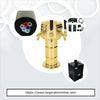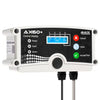Receiving and Storing Beer
Unlike wine, beer is meant to be consumed fresh. When beer is released from the brewery it is ready to drink and from there, time is beer’s enemy. Yes, there are some beers which can be cellared but these are very few and far between. These facts make it incredibly important to store your beer correctly to ensure that your beer has the longest shelf life possible and to rotate your product upon receiving so that you’re serving the best and freshest beer possible and not having to throw away stock because of poor stock management and practices.
How long Can You Store Beer?
Non-pasteurized keg beer can remain fresh for about 45-60 days when refrigerated, pasteurized keg beer can keep fresh for about 90-120 days when refrigerated. Unfortunately, there’s no indication of pasteurization on the keg itself so you’ll have to ask individual breweries whether or not they pasteurize their beer.
Canned and bottled products can remain fresh for up to six months when refrigerated. Hoppier styles such as IPAs are actually more susceptible to the effects of time, and flavor changes can sometimes be noticed within three months. This is because the volatile aromas and flavors of hops degrade quicker than other flavors.
Storing Beer: Cold vs Warm
Beer should ALWAYS be stored in a cold, preferably refrigerated, space. Storing beer at room temperature will decrease its lifespan from the periods noted above. Storing beer at temperatures higher than room temperature can rapidly increase the deterioration of the product. If beer is stored at warmer temperature or subject to rapid changes in temperature its flavors will deteriorate even quicker.
Receiving Beer
Put simply, products should be checked for date and damage upon receiving them. The date on products should also be checked so that you can be sure that you can sell the beer in the timespan allotted by the brewer.
Dates and Codes
Unfortunately, there is no industry standard for date codes stamped onto beer. Some codes indicate a best-by date; some codes indicate the date the product was packaged. Unfortunately it’s up to you to determine which code specific breweries and products use. There's two common types of code:
- Regular consumer date codes, as seen on supermarket products: e.g. 052420 = May, 24, 2020
- Julian or Ordinal date codes e.g. 301-20 = October 27th, 2020 (the first number is the day of the year)
Either of these can be a best-before or packaging date. Some breweries will use their own date code format and you’ll have to call them to decipher them.
Rotating Product
When you receive stock it should be rotated into your storage area so that the oldest product gets pulled and served first. Unless you’re the person always putting away stock this is a seemingly simple yet imperative part of employee training. Training employees to rotate product when they’re stocking lowboys or other storage areas behind your bars is just as important.










